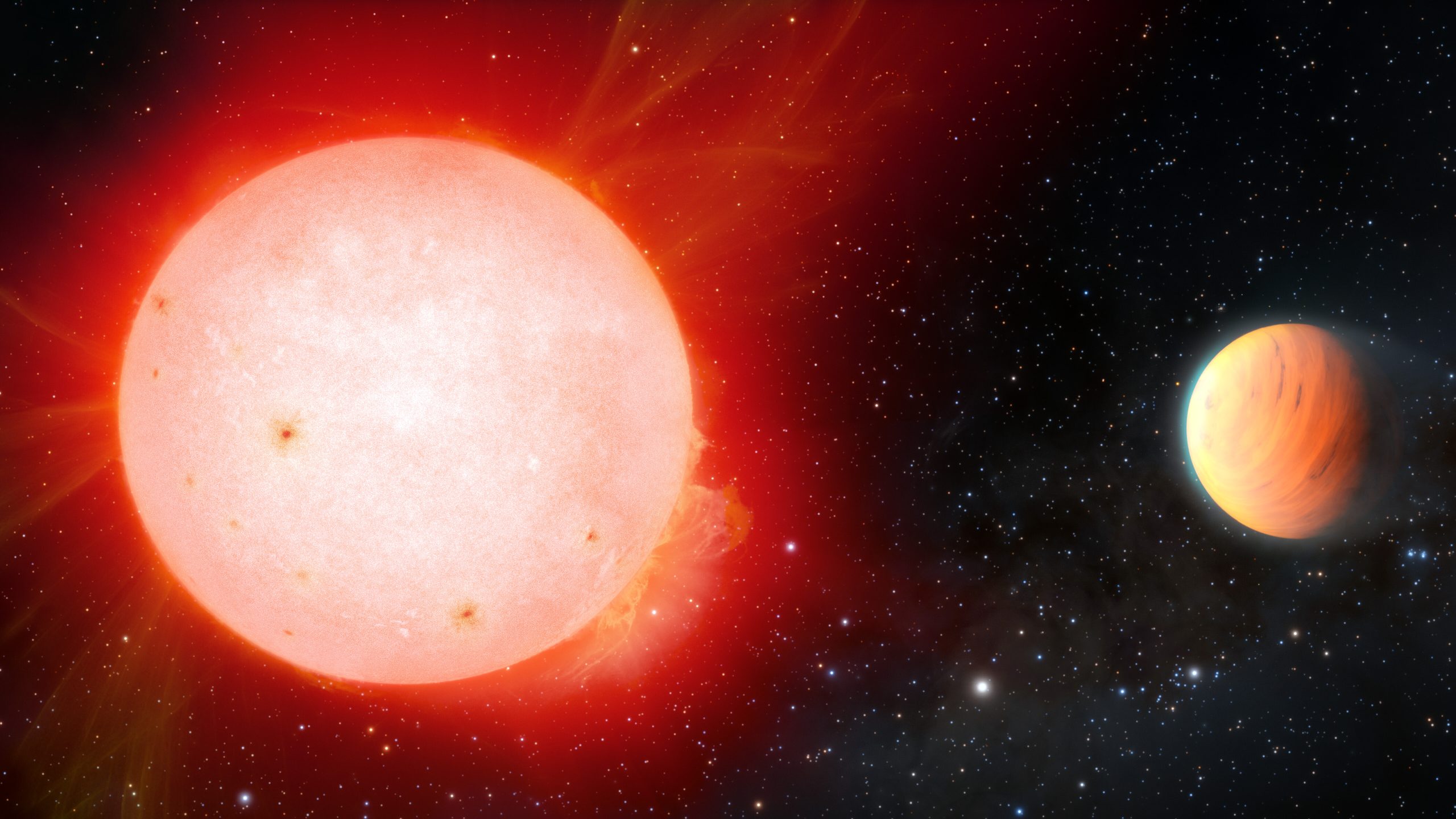Fluffy planet orbits a cool red dwarf star
Astronomers using the 3.5-meter WIYN telescope at Kitt Peak National Observatory in Arizona have observed an unusual Jupiter-like planet in orbit around a cool red dwarf star. This planet, designated TOI-3757 b, is located about 580 light-years from Earth in the constellation Auriga, the charioteer, and is the lowest density planet ever discovered around a red dwarf star. Researchers estimate that its average density is equivalent to that of a marshmallow.
Red dwarf stars are the smallest and faintest members of the so-called main sequence stars – stars that convert hydrogen to helium at a uniform rate in their cores. Although they are “cool” compared to stars like our Sun, red dwarf stars can be extremely active, triggering violent eruptions that can strip a planet of its atmosphere. That such a gas giant orbits there, of all places, was previously considered rather unlikely.
“Giant planets around red dwarf stars have traditionally been considered difficult to form,” said Shubham Kanodia, a researcher at the Earth and Planets Laboratory at the Carnegie Institution for Science and lead author of a paper published in The Astrophysical Journal. “So far, this has only been studied with small samples from Doppler surveys, which typically found giant planets at greater distances from these red dwarf stars. Until now, we haven’t had a large enough sample to find gas planets nearby in a robust way.”
So how could TOI-3757 b have formed? Kanodia’s team believes they have a solution to this puzzle. According to them, the particularly low density of TOI-3757 b could be due to two factors. Gas giants are thought to start with a massive rocky core, about ten times heavier than Earth, and then quickly attach large amounts of gas from their surroundings. Now, the parent star of TOI-3757b has a lower abundance of heavy elements compared to other M dwarfs. This could have caused the rocky core of the planet to form more slowly, virtually due to a lack of raw materials, delaying the onset of gas accretion and thus affecting the overall density of the planet. The second factor could be the planet’s orbit, which is thought to be slightly elliptical. There are times when it comes closer to its star than at other times, resulting in significant overheating that apparently inflated the planet’s atmosphere.
The planet was first discovered by NASA’s Transiting Exoplanet Survey Satellite (TESS). TESS tracked the transfer of planet TOI-3757 b in front of its star, which allowed astronomers to calculate the planet’s diameter to be about 150,000 kilometers, which is slightly larger than that of Jupiter. The planet completes a full orbit of its host star in just 3.5 days, 25 times less than the closest planet in our solar system – Mercury – which takes about 88 days to do so.
The astronomers then measured the star’s apparent motion along the line of sight, also known as its radial velocity. These measurements yielded the planet’s mass, which is about one-quarter that of Jupiter, or about 85 times the mass of Earth. Knowing the size and mass allowed Kanodia’s team to calculate TOI-3757 b’s average density as 0.27 grams per cubic centimeter. This would make it less than half the density of Saturn (the lowest density planet in the solar system), about a quarter the density of water (meaning it would be floating in a giant bathtub filled with water), or, in fact, similar in density to a marshmallow.
